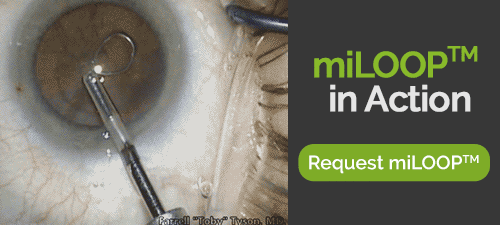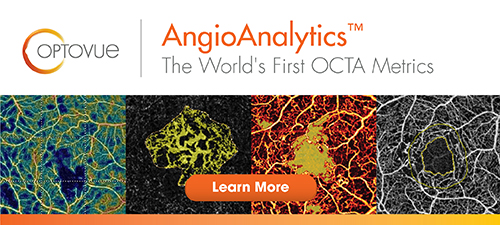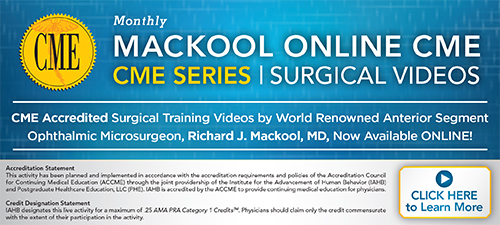
Volume 18, Number 28 |
Monday, July 9, 2018 |
|
JULY IS UV SAFETY MONTH |
|
||||
|
Quantitative Assessment of Macular Contraction & Vitreoretinal Alterations in Anti-VEGF-treated DME Scientists evaluated macular contraction after anti-vascular endothelial growth factor injections for diabetic macular edema by documenting the displacement of macular capillary vessels and epiretinal membrane formation.
|
|
| SOURCE: Cetin EN, Demirtaş Ö, Özbakış NC, et al. Quantitative assessment of macular contraction and vitreoretinal interface alterations in diabetic macular edema treated with intravitreal anti-VEGF injections. Graefes Arch Clin Exp Ophthalmol 2018; June 20. [Epub ahead of print]. |  |
|
Schlemm’s Canal Microstent for IOP Reduction in POAG & Cataract In a pivotal clinical trial conducted by Ivantis, researchers compared cataract surgery with implantation of Ivantis’ Hydrus Schlemm’s canal microstent and cataract surgery alone to reduce intraocular pressure and medication use after 24 months, as part of the prospective, multicenter, single-masked, randomized controlled HORIZON trial.
They included subjects with concomitant primary open-angle glaucoma, visually significant cataract and washed-out modified diurnal IOP (MDIOP) between 22 and 34 mmHg. |
|
| SOURCE: Samuelson TW, Chang DF, Marquis R, et al. A Schlemm canal microstent for intraocular pressure reduction in primary open-angle glaucoma and cataract: The HORIZON study. Opthalmology 2018; June 23. [Epub ahead of print]. |  |

|
|
 |
|
Review of Ophthalmology® Online is published by the Review Group, a Division of Jobson Medical Information LLC (JMI), 11 Campus Boulevard, Newtown Square, PA 19073. To subscribe to other JMI newsletters or to manage your subscription, click here. To change your email address, reply to this email. Write "change of address" in the subject line. Make sure to provide us with your old and new address. To ensure delivery, please be sure to add reviewophth@jobsonmail.com to your address book or safe senders list. Click here if you do not want to receive future emails from Review of Ophthalmology Online. Advertising: For information on advertising in this e-mail newsletter or other creative advertising opportunities with Review of Ophthalmology, please contact sales managers James Henne or Michele Barrett. News: To submit news or contact the editor, send an e-mail, or FAX your news to 610.492.1049 |


